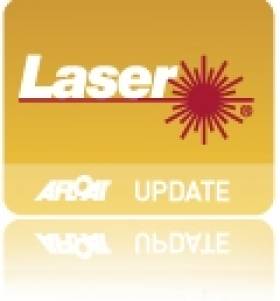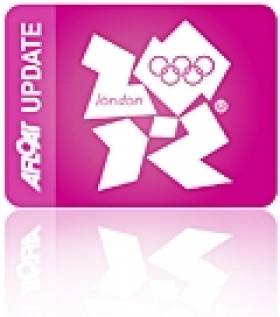Displaying items by tag: Dublin
Marine Notice: Rock Placements Off Co Dublin & Buoy Deployments Off West Cast
#MARINE WARNING - The latest Marine Notices from the Department of Transport, Tourism and Sport (DTTAS) advise mariners to keep a look-out for rock placement off north Co Dublin and buoy placements off Co Mayo and Co Clare.
Operations were due to commence on Saturday 8 September at North Beach in Rush, Co Dublin for the placement of rocks offshore and in the Irish Sea for a period of 10-12 days weather permitting.
The works are being undertaken by DPFPV Tideway Rollingstone (call sign PHYR) and DPFPV Stornes (call sign PCKX) at various locations detailed in Marine Notice No 49 of 2012, a PDF of which is available to read or download HERE.
These vessels are operating on a 24-hour basis and will display appropriate days shapes and lights. They are also transmitting an AIS signal and will keep a listening watch on VHF Channel 16 for the duration of the works, which involve the deployment of survey ROVs and fall pipe that will restrict the vessels' movements. All mariners are instructed to give a wide berth.
Meanwhile off the west coast, ESB International has deployed two Waveroder buoys as positions near Achill Island in Co Mayo and Doonbeg in Co Clare.
The Achill buoy will be operational for a minumum of three months from now, while the Killard buoy will be operational for a minimum of 10 months having been recently relocated. Both are spherical and yellow in colour. All vessels are requested to give the buoys a wide berth.
Full details of their positions are included in Marine Notice No 50 of 2012, a PDF of which is available to read or download HERE.
Balbriggan Beach Reopens After E.coli Scare
#COASTAL NOTES - The Irish Times reports that Balbriggan Beach was reopened for swimming yesterday 31 August after the latest in a string of E.coli scares around the Irish coast.
The beach at the north Co Dublin coastal town was closed to bathers after a pumping station malfunction caused raw sewage to be pumped into the sea for up to 24 hours earlier this week.
E.coli levels were subsequently recorded at five times the maximum EU safety limit, and as much as 100 times the Blue Flag standard for European beaches.
The incident raised concerns among campaigners opposed to the proposed new water treatment 'super plant' for Fingal.
As previously reported on Afloat.ie, worries have been expressed by locals in the towns of Skerries, Loughskinny and Rush about the effects of the planned outfall pipe in their area.
The Balbriggan swimming ban marked the second beach closure in north Dublin during August, after the waters at Rush South were found to be contaminated with E.coli over the bank holiday weekend.
A bathing ban was also imposed on seven beaches in Cork last month due to high levels of the bacteria, while a breach of safe levels at Salthill in Galway last week caused concern ahead of tomorrow's Ironman 70.3 triathlon.
Tall Ships Dublin Organisers Launch Festival Programme
#TALL SHIPS - Preparations are well underway for the arrival of the Tall Ships Races Festival Dublin, one of the most anticipated events of the year which kicks off this Thursday 23 August.
Presented by the Polish port city of Szczecin and organised by Sail Training International, the festival in Dublin's Docklands aims to top last year's celebrations in Waterford and will see the city come alive with a spectacular atmosphere both on and off the water.
Some of the 40 magnificent Tall Ships - such as the barque STS Pogoria – have already begun to arrive in Dublin Port at the end of the prestigious international race and will line the North and South of the River Liffey as the centerpiece of the four-day free festival.
Along with Waterways Ireland's programme at Grand Canal Dock as previously reported on Afloat.ie, organisers Dublin City Council and the Dublin Port Company have scheduled an impressive series of events to herald the arrival of the fleet that will cater for all tastes and ages and will showcase Dublin at its very best.
And don't forget you can catch all the sights on the Allianz All-Aboard Liffey Cruise, with seats available for just €1!
The highlight of the weekend is bound to be the stunning Parade of Sail as the ships depart the capital on Sunday 26 August from 11am.
Friday afternoon will also see thousands of Tall Ships crew members from all four corners of the globe march up Dublin’s north quays from Point Village for what promises to be a vibrant, colourful spectacle to kick off the weekend, finishing at The Custom House for a special prize giving ceremony with musical accompaniment from the the Garda Band, the Tallaght Youth Band and the Army No 1 Band.
Also taking place is a series of maritime-themed readings and talks in various locations, including a barge, which will celebrate the history and some of the personal tales from Dublin’s Docklands.
Celebrated writers and historians such as Peter Sheridan, Theo Dorgan, Anne Chambers, Turtle Bunbury and the local Dockers Preservation Society will regale their audiences with tales of Dublin City, its port, their sailing experiences, excerpts from their books. See www.dublintallships.ie for times and e-mail your name and title of talk to [email protected] to be placed on the guest list - first come, first served.
Complementing the maritime element, the festival will feature 55 music acts over the four days including the Undertones, Ash and Therapy? at the Bulmers Live Music Dock at George’s Dock. And the entertainment continues into the evening with an open-air floating cinema showing classics such as Jaws and The Life Aquatic.
More than 100 performance acts from trapeze artists to wake boarding will wow the crowds on both sides of the river each afternoon, not to mention food and craft markets, walking literary tours and a funfair.
On the south quays, Grand Canal Dock will host a family zone, while Hanover Quay will come alive with skateboarding, parkour, beatboxing and music with the spectacular Kings of Concrete. Visitors can also try their hand at cable kayaking, pedalo boats, wakeboarding and crazy golf on a pontoon at Grand Canal Dock with Waterways Ireland and Surf Dock.
On the other side, food demonstrations from some of Ireland’s leading chefs will take place at the Theatre of Food in Linear Park. And the Festival Hub at CHQ will have a more relaxed atmosphere with a beautiful black and white photography exhibition from the Dublin Docklands Preservation Society, a range of workshops including yoga and 'upcycling' an and exhibition of Viking Dublin in the vaults.
Full details of events and how to get to the Tall Ships Races Festival can be found at www.dublintallships.ie. Gardaí are appealing for visitors to use public transport into the city due to a number of road closures, and have warned that anti-social behaviour including pubic drinking will not be tolerated.
American Sailor Hopes to Find Lost Irish Love
#NEWS UPDATE - More than three decades after their whirlwind romance, an American sailor is trying to reconnect with his long-lost Irish love.
As World Irish reports, Jarvis Boykin was on shore leave from the USS Mount Whitney when he he me the "gorgeous little strawberry blonde" at a nightclub in Dublin in 1976.
"We spent as much together as we could for those nine days that I was there," Boykin told the Mooney show on RTÉ Radio 1.
The pair exchanged letters for a time, but after the 1979 postal strike they lost touch, and Boykin later lost the woman's contact information.
But last week Boykin contacted Mooney from his home in North Carolina to appeal for anyone who can help in finding his lost love.
World Irish has more on the story HERE.
UK Laser Sailors in £50K Irish Sea Crossing Challenge
#LASER - A pair of British sailors are set to embark on an intrepid crossing of the Irish Sea using just two single-handed Laser dingies.
David Summerville and Steve Cockerill had originally planned to make the crossing in September last year, but those plans were scuppered by 50-knot gale force winds and a 12-foot tidal swell, according to Incentive Travel.
But the duo is now planning to try again, with the backing of the Ramada Plaza Southport.
“David and Steve will be covering 115 nautical miles during the challenge," said Ramada Plaza general manager Enda Rylands. "They will set off from my own home town of Dublin and finish in Southport, aiming to raise £50,000 for mental health charity Mind and the John Merricks Sailing Trust."
Summerville, a 53-year-old grandfather of two who runs a boat repair business, said the date of the challenge would again depend on weather and tidal conditions, and that the pair is ready to depart any time from mid-April to mid-September.
It's not the first time that an Irish Sea crossing has been done in a Laser as Tiffany Brien achieved the feat in 2010, sailing single-handedly the 30 miles from Portpatrick in Scotland to Belfast Lough.
But Summerville and Cockerill's ambitious undertaking, at more than three times that distance, would surely get them a place in the record books - provided the weather goes their way!
Father-Son Duo in Charity Paddle from Dublin to Donegal
#KAYAKING - A father-and-son duo from north Co Dublin will shortly embark on an epic kayak paddle from Dublin to Donegal, the Fingal Independent reports.
Dermot Higgins and his son Fionn, from Rush, will attempt to kayak from Dublin Port to the Atlantic Ocean at Ballyshannon - a distance of some 330km - by way of the Royal Canal, the River Shannon and Lough Erne.
The Higgins' - who believe they are the first to attempt such a feat - will be completely self-sufficuent for the duration of the challenge, which is hoped to raised funds for the Rush Open Organisation for Transition Status (ROOTS), a charity that intends to help communities reduce their carbon footprint and face up to environmental challenges by encouraging sustainability.
The Fingal Independent has more on the story HERE.
RNLI To Play Big Part in Olympic Torch Relay
#OLYMPICS 2012 - The RNLI will play a "key role" during the Olympic torch relay ahead of the London games this summer, as Yachting and Boating World reports.
On 28 May the Olympic torch is set to visit Anglesey in north Wales, when it is taken along the Menai Strait on board the RNLI's Annette Mary Liddington.
The torch will again be carried by RNLI volunteers on 18 July when it is ferried to shore from a tall ship in Dover harbour aboard the all-weather lifeboat City of London II.
Dover RNLI's operations manager Roy Couzens said: “We are very much looking forward to being involved on the day – and believe me, when that torch is at sea in our lifeboat, it couldn’t be in safer hands!”
The Olympic torch relay begins in Plymouth on 19 May and finishes at the Olympic Stadium on 27 July. Its two-month-long journey will take it throughout Britain and Northern Ireland, and includes a visit to Dublin on Wednesday 6 June.
An interactive map of the complete torch relay route is available on the official London 2012 website HERE.
Body Recovered Off Dublin Thought to Be Missing Fisherman
#RESCUE - The Evening Herald reports that a body recovered 14km off the coast of north Dublin on Sunday is believed to be that of a missing fisherman.
The grisly find was made by the fishing vessel Rath Eilte in the waters off Skerries. A post-mortem was set to be carried out yesterday to determine the cause of death.
Found fully clothed in black and yellow oilskins, the remains are thought to be those of a Ukrainian in his 30s, a crewman on the Kilkeel-registered Zenith who was reported missing some 14.5km off Clogherhead in Co Louth on 29 January.
Tall Ships Training Opportunities for Young People Across Ireland
#TALL SHIPS - The organisers of the Tall Ships Races visit to Dublin are inviting young people to get involved by becoming 'trainees' aboard the fleet as they race from Spain to Ireland this summer.
The 18 ships (as of last November) are set to sail from A Coruña in northern Spain to Dublin on the final leg of this year's race over an estimated ten-day period from 13-23 August.
Young people across Ireland can now apply to be trainees on board the tall ships and take part in a voyage as crew. No previous experience is necessary.
Open information days are planned for this weekend from tomorrow (Friday) 17 February to Sunday 19 February from 12pm to 6pm daily at the CHQ building in the IFSC, close to the Jeannie Johnston museum.
Anyone that is interested in taking part or receiving further information can register at www.dublintallships.ie/trainees/
Meanwhile, organisers are also making funding available for the young people of the capital.
The Dublin City Tall Ships Funding will cover the costs of 25 trainees from Dublin to sail on the ships as they race from Spain.
Any youth organisation within Dublin City Council Administrative Area can nominate members of their organisation. Alternatively, individuals may apply and seek the nomination of a youth organisation such as a youth group or community group; school or college; sports club or Scouts group.
Details about this funding programme and other opportunities are included in the information bulletin attached below.
For further information contact trainee recruitment officer Michael Byrne at [email protected].
Dive Ireland Expo Returns
#DIVING - Dive Ireland 2012, Ireland's only dedicated dive expo, promises to be bigger, better and feature more speakers, exhibits and workshops - everything for the dive professional as well as the complete beginner.
The 21st Annual International Dive Show, hosted by the Irish Underwater Council (CFT), will take place at the City North Hotel in Dublin on the weekend of 3-4 March.
This year's show will feature top SCUBA professionals including keynote speaker Rory Golden, who in 2000 became the first Irish diver to visit the wreck site of the Titanic, returning for a second visit in 2005.
Golden will be giving a series of talks on his experiences to mark the centenary of the ill-fated ship's sinking in the north Atlantic.
Dive Ireland 2012 will also feature a huge array of Irish SCUBA companies, free seminars and practical workshops that will cater to a wide range of diver interests, along with a host of in-show features guaranteeing a great day out for divers and non-divers alike.
Visit the Dive Ireland 2012 website for more details on tickets or booking a stand.







































































